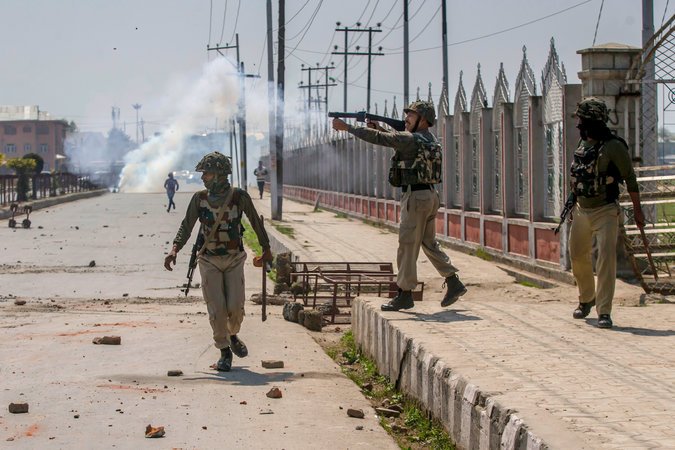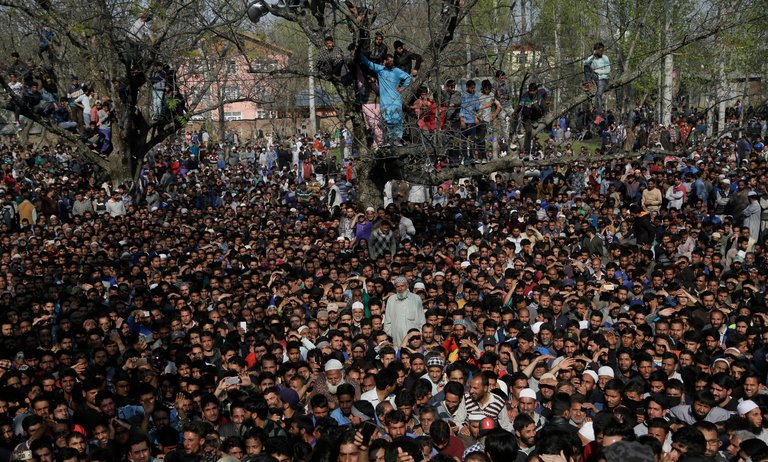At Least 20 Killed in Kashmir as Indian Army Clashes With Militants
SHOPIAN, Kashmir — An Indian Army operation against militants fighting Indian rule in the Muslim-majority Kashmir Valley killed at least 13 militants on Sunday, the largest one-day death toll of insurgents in recent years, officials in Kashmir said.
At least three soldiers and four civilians also died, and about 70 other people were wounded in the army crackdown in the district of Shopian, according to the Kashmir authorities.
Army officials called the operation a major success. “It is a special day for our forces,” Lt. Gen. A. K. Bhatt of the Indian Army said.
Kashmir — caught in a territorial dispute between the Hindu-majority India, which controls much of the territory, and the Muslim-majority Pakistan — has endured brutal conflict for decades.
Advertisement
Continue reading the main story
A violent secession movement that started in the late 1980s saw many guerrilla fighters crossing the border from Pakistan into India. In turn, India increased its military presence in the region to try to quell the uprising.
Continue reading the main story
The insurgency in Kashmir accelerated after Indian forces killed a charismatic militant leader, Burhan Muzaffar Wani, in July 2016. Since then, the frequency of protests against Indian rule has increased. This year, dozens of people, including many civilians, have been killed in the fighting.

On Sunday, as a gun battle raged in the village of Draged-Sugan, where at least seven of the militants were killed, protesters took to the streets to demonstrate against Indian security forces.
Many of the protesters threw stones at the security personnel in an apparent attempt to provide cover for the militants, members of the Hizbul Mujahedeen and Lashkar-e-Taiba groups.
“For as long as the last Kashmiri is alive, we will come out to support militants,” said Numaan Ahmad Malik, 27, a college student, who was wounded in the clashes and was treated at a hospital.
Newsletter Sign Up
Continue reading the main story
Please verify you're not a robot by clicking the box.
Invalid email address. Please re-enter.
You must select a newsletter to subscribe to.
Sign Up You agree to receive occasional updates and special offers for The New York Times's products and services.
Thank you for subscribing.
An error has occurred. Please try again later.
You are already subscribed to this email.
View all New York Times newsletters.
- See Sample
- Manage Email Preferences
- Not you?
- Privacy Policy
- Opt out or contact us anytime
Indian officers retaliated by firing pellet guns and rifles with live ammunition into the crowd, and the state government shut down the internet in an effort to prevent further protests from being organized online.
Many of the injured on Sunday sustained bullet wounds or pellet injuries, officials said. Shesh Paul Vaid, the top Indian police officer in the region, said that 213 militants were killed last year — the largest number in seven years.
Around the village of Kachdora, where another gun battle unfolded on Sunday, shots and tear gas pierced the afternoon.
“For every 10 killed, 20 more will join until this land is freed from Indian occupation,” said Imtiyaz Ahmad, a protester in Kachdora.
Kai Schultz contributed reporting from New Delhi.
Continue reading the main story Read the Original Article




























